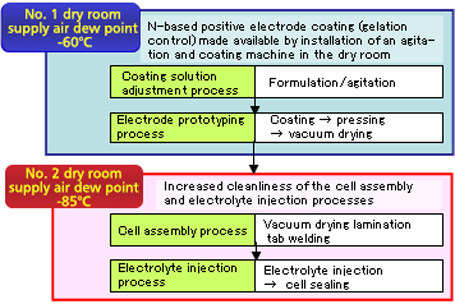Battery-Materials Analysis & Evaluation
Battery and Capacitor Prototyping
JFE-TEC conducts integrated prototyping evaluation ranging from adjustment of an electrode coating solution for lithium-ion secondary battery and capacitor to electrode coating and battery prototyping, or from capacitor prototyping to charge-discharge characteristic assessment, in an ultra-low humidity environment according to your request.
We also conduct individual works such as electrode coating and pressing.
In addition, even if you do not have all battery materials, we can perform battery prototyping (or capacitor prototyping) and characteristic assessment by using our battery materials.
Battery/capacitor types and cell types that can be prototyped
- Specimens in minute amounts can also be treated.
- Prototyping evaluation using members we procure is also available.
We can also help you prototype a 18650 cylindrical battery. Please feel free to contact us.
-
Battery/capacitor type Cell type - Lithium-ion secondary battery (LIB)
- Electric double-layer capacitor (EDLC)
- Lithium-ion capacitor (LIC)
- Coin cell
2032, 20169 - Laminate cell
Maximum electrode size: A4
Layer-built cell can also be prototyped (automatic lay-up machine)
-
- LIB:
- Li-ion Batteries
- EDLC:
- Electric Double
Layer
Capacitors - LIC:
- Li-ion Capacitors
-
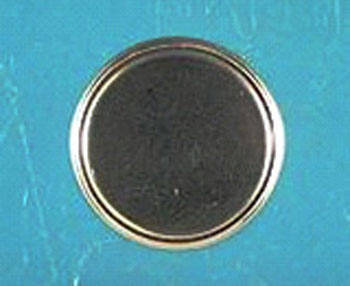
Coin battery 2016/2032 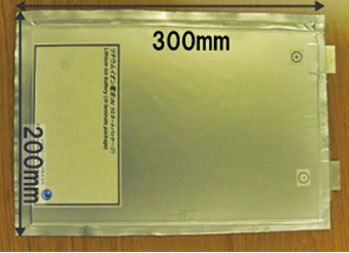
Example of laminate battery
(maximum electrode size: A4) -
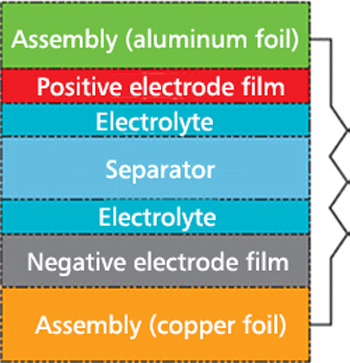
Basic structure
of laminate type
Lamination image
The following are the battery/capacitor types and cell types that can be prototyped.
-
Type A Type B Type C Type D -
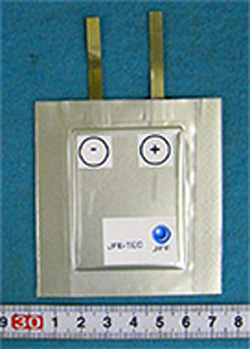
Electrode size: 32 mm × 37 mm
-
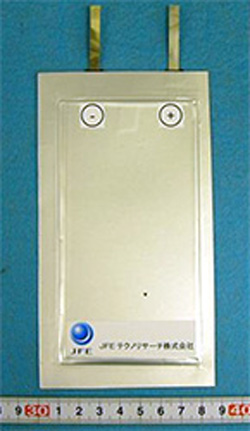
Electrode size: 65 mm × 100 mm
-
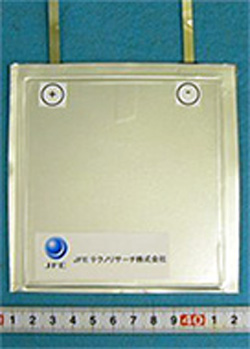
Electrode size: 90 mm × 90 mm
-
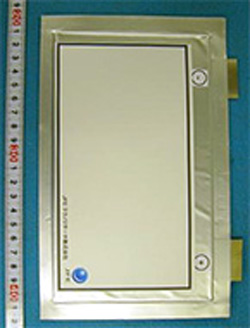
Electrode size: 100 mm × 175 mm
-
Prototyping Evaluation Menus
Production of Coating Material for the Positive and Negative Electrodes of LIB, EDLC and LIC
We also conduct individual works such as coating solution adjustment, coating and pressing, as well as assessment of coating material.
- Production of coating material
- Measurement of the viscoelasticity of coating solution (slurry)
- Assessment of dispersibility of active material, auxiliary agent and binder contained in the coating film (cross-section structure analysis)
- Chemical component analysis of coating film
Prototyping of LIB, EDLC and LIC (coin cells, laminate cells)
In addition to integrated assessment ranging from coating solution adjustment to cell assembly and charge-discharge characteristic assessment, we can also conduct individual works such as cell assembly and liquid injection.
You can perform cell assembly work by using our rental lab.
Battery and capacitor characteristic assessment
-
- Charge-discharge characteristics (initial, rate characteristic, cycle characteristic)
- IR drop and impedance measurement
- Electrochemical measurement (CV measurement, LSV measurement)
-
- CV:
- Cyclic Voltanmetry
- LSV:
- Linear Sweep Voltanmetry
Rental lab - ultra-low humidity environment: use of a rental dry room -
Necessity of a Low Humidity Environment
The manufacturing of a lithium-ion secondary battery or an electric double-layer capacitor using activated carbon electrodes requires an ultra-low humidity working environment.
This is because of the fact that if the electrode or electrolyte absorbs moisture, a sufficient performance cannot be achieved. Therefore, it is necessary to keep the moisture content below a certain level even at the research and development stage.
In addition, works such as battery disassembly for analyzing battery deterioration, measurement of moisture content in an electrolyte, and analysis of hydrogen fluoride (HF) must also be performed in an ultra-low humidity environment.
A double dry room facility provides a high-quality, highly-efficient environment - supply air dew point: -85℃ / supply air dew point: -60℃ -
In electric storage devices such as lithium-ion battery (LIB) and electric double-layer capacitor (EDLC), minimization of the residual moisture content in the electrodes, separator and electrolyte is the key to achieving high quality.
JFE-TEC operates a dry room with a supply air dew point of -85℃. This dry room, together with an existing dry room with a supply air dew point of -60℃, can be used as a rental dry room.
In the existing dry room with a supply air dew point of -60℃, we have conducted integrated prototyping in processes from coating solution adjustment to electrode coating, pressing, cell assembly and electrolyte injection/sealing. With the adoption of a new dry room with a supply air dew point of -85℃, the battery prototyping processes are now performed in a double dry room facility as shown in the figure.
This enables the dew point in the electrolyte injection and sealing process, which is the final process, to be lowered to -85℃. In addition, erection of a separate room for the coating solution adjustment and coating process enables the cleanliness of the lamination process to be increased. As a result, the risk of foreign material contamination can be eliminated.
-

Figure: Image of the double dry room facility -
